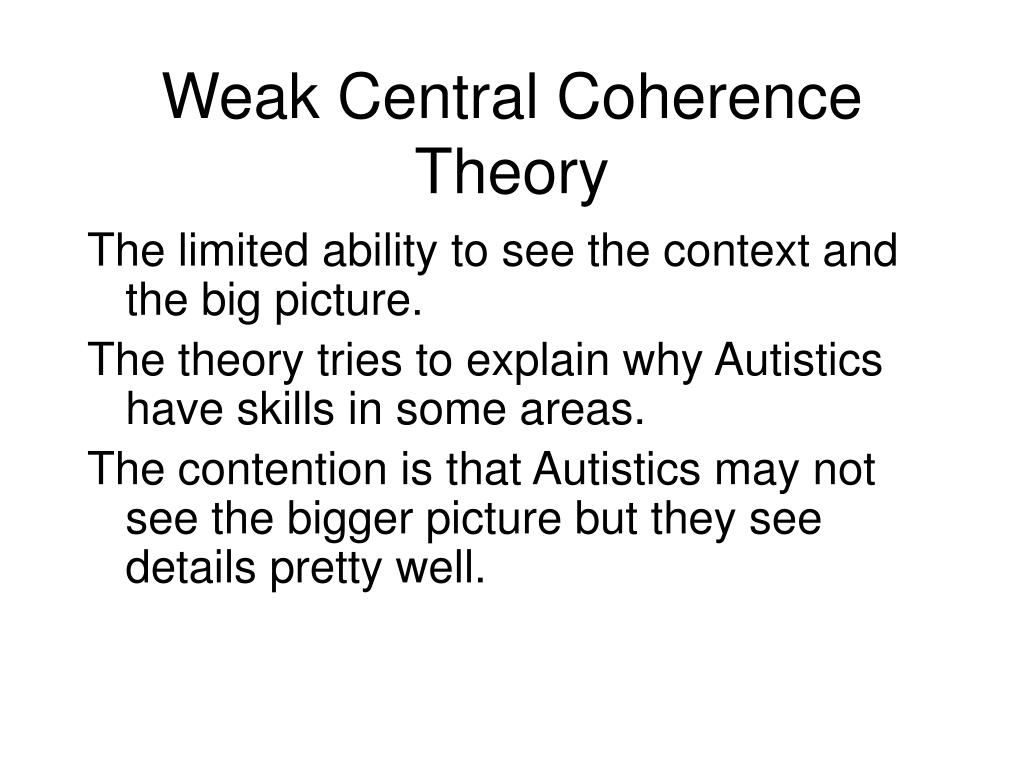

The ability, however, to focus on detail can also be a strength which can support the child or young person’s development and learning. But a child or young person with autism who can’t see the bigger picture would only see lots of individual trees or may focus in on the soil that the trees are planted.ĭifficulty in this area can affect a child’s learning and development – for example, after reading a story, the child might remember the small details but forget what the overall meaning of a story. When this happens children and young people can often get lost in the minute details, rather than pulling together different sources of information and seeing the whole situation.įor example, when someone who can see the bigger picture looks at an endless length of trees, that person would see ‘the forest’. Results Self-report but not performance based measures of cognitive flexibility and central coherence were associated with QoL.

Set-shifting is also referred to as cognitive flexibility and is the ability to adapt to changing environmental demands by flexibly switching between different rules, tasks, actions, and mental sets 4, 5. Methods Cognitive flexibility and central coherence were measured by both neuropsychological (i.e., performance based) and self-report measures alongside with self-reported QoL in a sample of 138 adult patients with AN. This can often impact on their understanding of the actual meaning or appreciation of the nature of a situation or context. Anorexia nervosa (AN) has consistently been found to be associated with weak set-shifting 1, 2 and central coherence 3. Children and young people autism may sometimes become fixated or overly focused on details. how children and young people with autism process information.Īs highlighted by (Happe´ and Frith 2006) an inability to see the bigger picture refers to the detail-focused processing style proposed to characterise autism.įor example, when someone is interacting with the environment, or recalling information, most people will be able to recall the gist of something e.g. Frith (1989) suggested that the theory of weak central coherence may help explain some aspects of this within autism i.e. We addressed this hypothesis by testing central coherence in ASD (n 19. Individuals with autism may have difficulty seeing the ‘bigger picture’. This study sought to provide a test of the weak central coherence hypothesis.


 0 kommentar(er)
0 kommentar(er)
